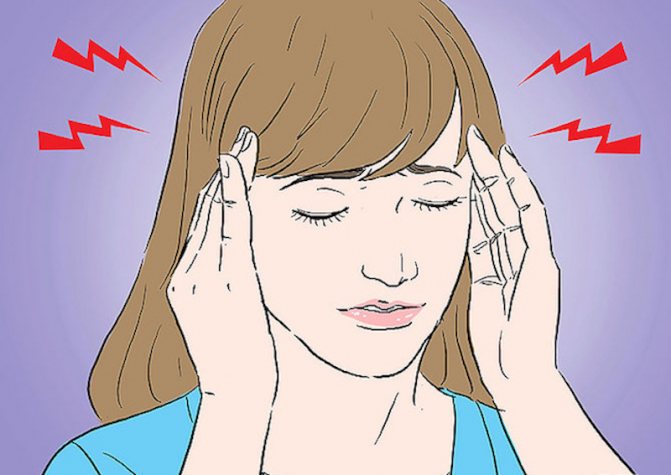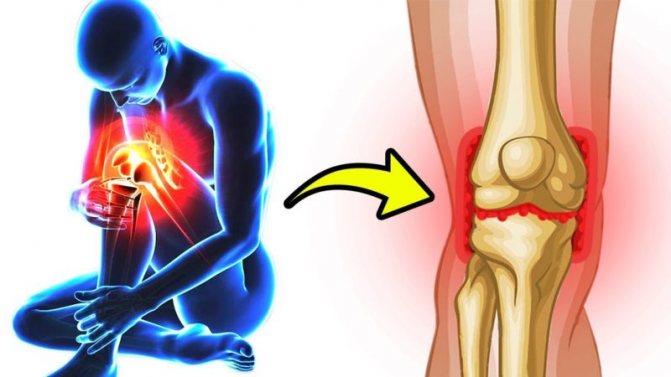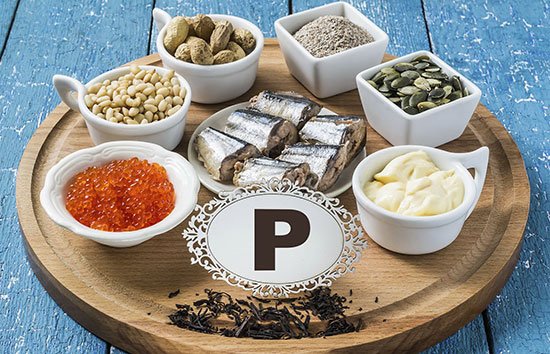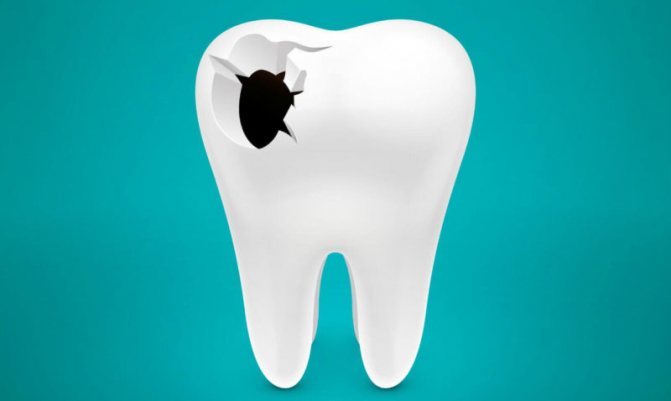Phosphorus (phosphorus) is one of the most common chemical elements on our planet. Phosphorus makes up 0.08 - 0.09% of the mass of the Earth's crust.
Phosphorus plays an important biological role and serves as a building material for many cells of living organisms. In the plant world, it is found in all plants. The highest concentration is observed in fruits and seeds of plants.
In the animal world, phosphorus is part of proteins and many vital organic compounds, including enzymes, nucleic acids, and so on. Phosphorus is found in the tissues and organs of living organisms, but the largest amount is found in bone tissue and tooth enamel.
The average human body contains from 500 to 750 grams of phosphorus, with 90% (calcium phosphate) concentrated in bone tissue. In combination with calcium, phosphorus forms mineral structures that provide strength to bone tissue and tooth enamel. Phosphorus plays an important role in the formation of muscle tissue and brain tissue, and is included in their composition as a building material.
One of the important functions of phosphorus is its participation in energy processes occurring in the human body.
In the tissues of a living organism and food products, phosphorus is contained in the form of phosphoric acid and organic compounds of phosphoric acid (phosphates).
Loss of appetite
The cause of sudden loss of appetite may be anemia associated with a lack of phosphoric acid. The absence of a valuable macronutrient impairs the process of hematopoiesis. At the same time, the brain does not receive the necessary impulses and the person simply does not feel hungry. Taste buds stop responding properly, completely blocking interest in food.
You should not self-medicate - forced feeding can lead to nausea and vomiting. Only a doctor can correct the condition, so you should not put off visiting him.
P2
Two phosphorus atoms combine to form a P2 molecule at a temperature of about 1000°C.
At lower temperatures, phosphorus exists in tetraatomic P4 molecules as well as in more stable polymeric P∞ molecules.
Allotropic modifications of phosphorus:
- White phosphorus is an extremely toxic (lethal dose of white phosphorus for an adult is 0.05-0.15 g) waxy substance with the smell of garlic, colorless, luminescent in the dark (the process of slow oxidation in P4O6); the high reactivity of white phosphorus is explained by weak P-P bonds (white phosphorus has a molecular crystal lattice with the formula P4, in the nodes of which phosphorus atoms are located), which break quite easily, as a result of which white phosphorus, when heated or during long-term storage, turns into more stable polymer modifications: red and black phosphorus. For these reasons, white phosphorus is stored without access to air under a layer of purified water or in special inert environments.
- Yellow phosphorus is a flammable, highly toxic substance, does not dissolve in water, easily oxidizes in air and ignites spontaneously, while burning with a bright green, dazzling flame and emitting thick white smoke.
- Red phosphorus is a polymeric, water-insoluble substance with a complex structure and the least reactive ability. Red phosphorus is widely used in industrial production, because it is not so poisonous. Since in the open air red phosphorus, absorbing moisture, gradually oxidizes to form a hygroscopic oxide (“damp”) and forms viscous phosphoric acid, therefore, red phosphorus is stored in a hermetically sealed container. In the case of soaking, red phosphorus is cleaned of phosphoric acid residues by washing with water, then dried and used for its intended purpose.
- Black phosphorus is a greasy, graphite-like substance of gray-black color with semiconductor properties - the most stable modification of phosphorus with average reactivity.
- Metallic phosphorus is produced from black phosphorus under high pressure. Metallic phosphorus conducts electricity very well.
Increased anxiety

One of the main functions of phosphorus is to ensure the synthesis of nerve cells. With a persistent deficiency, neural connections are destroyed, a person begins to experience anxiety, constant anxiety, and in some cases, panic attacks or outbursts of aggression are possible.
Do not rush to swallow sedatives: they help only for a short time, relieving the symptom, but not eliminating the cause. It is recommended to take a blood test and clarify the balance of macroelements.
The role and importance of phosphorus for the human body
The main tasks of phosphorus are to ensure the natural growth of bones and teeth and maintain the integrity of these tissues throughout life. This element is located about eighty percent in the mineral part of teeth and bones, the remaining concentration is distributed in muscle tissue, organs and fluids of the human body.
Phosphorus is vital for children. Its need for the needs of a child’s body is much higher than for adults. A macronutrient that works together with other elements to produce energy for cells. Excess, like deficiency, affects health.

A child's body needs active bone building. Phosphorus helps him with this. When a child experiences a deficiency of this element, the skeleton begins to suffer. Rickets may appear at an early age, and osteoporosis and bone deformation may occur in older children. The child may stop growing upward.
Also, do not forget that phosphorus deficiency leads to a decrease in intellectual development. Performance decreases. Memory deteriorates and fatigue appears. The child may complain of headaches. It is important to notice and understand why the child has become calm and quiet. The lack of an element leads to obvious apathy. If you do not start corrective measures to replenish this essential substance in time, you can get irreversible consequences in the functioning of the nervous system.
Phosphorus is essential for teeth at any age. But in children this need is higher than in an adult. This is explained by the peculiarities of anatomy and physiology. Active growth of muscles, bones and teeth, all this requires a hefty dose of vitamins and nutrients, as well as minerals that go towards building all these tissues. The benefits of phosphorus are unconditional - helping in the process of bone tissue growth and strengthening tooth enamel.
The macronutrient is needed for the functioning of the entire human body. In some diseases, it plays an important role, for example, phosphorus in diabetes improves the main indicator of this disease, the process of regulating sugar levels.
The functions of phosphorus in the body are to form special enzymes. Intensive work in the process of fat metabolism helps produce and break down glycogen and starch. The macronutrient helps the thinking process. Motor activity is not possible without it, because muscles cannot contract without phosphorus compounds. The main thing for organisms is the respiratory function and digestion, which also occurs thanks to this element.
The importance of phosphorus cannot be overestimated. This macroelement forms highly active compounds such as lecithin. It is consumed in large quantities under very strong mental, emotional and physical stress.
Compounds containing phosphorus are necessary for:
- Cell protection;
- Storage and transfer of DNA;
- For cell growth and division;
- Supports acid and alkaline balance;
- Launching the mechanism to obtain the active form of vitamins.
It plays an important role in obtaining optimal blood composition.
Drowsiness

Do you sleep a lot, but constantly feel tired and tired? This condition can occur when there is a metabolic disorder: the necessary elements are quickly eliminated from the body and are not absorbed. Persistent phosphorus deficiency causes a sharp decrease in performance, rapid fatigue, and constant sleep problems.
Including phosphorus-rich foods in your diet will help correct your condition:
- fish,
- seafood,
- butter,
- liver,
- dried and fresh fruits.
PHOSPHORUS IN PRODUCTS
The daily human need for phosphorus is 1200 mg and a deficiency of this microelement is quite difficult to tolerate - one would have to become a strict vegetarian and eat fruits/berries/vegetables/fruits that grow on soils poor in this microelement. If a person eats well, then the daily dose of phosphorus enters his body from many products:
- pumpkin, cabbage, parsley;
- nuts, legumes, cereals;
- whole grain products, black bread;
- spinach, garlic, carrots;
- milk, cheese;
- fish, meat, beef liver;
- berries and mushrooms;
- eggs.
Headache

One of the most striking symptoms of phosphorus deficiency is frequent headaches: throbbing, pressing or ringing. They occur at different times of the day and may be accompanied by increased blood pressure, nausea, and vomiting.
They are difficult to relieve with painkillers; pain that appears in the morning can accompany you throughout the day. Discomfort may be associated with insufficient oxygen supply to the brain or a chronic lack of phosphoric acid in nerve cells.
Chemical properties of phosphorus
Of all the allotropic modifications of phosphorus, the most active is white phosphorus (P4). Often in the equation of chemical reactions we write simply P, not P4. Since phosphorus, like nitrogen, has many variants of oxidation states, in some reactions it is an oxidizing agent, in others it is a reducing agent, depending on the substances with which it interacts.
oxidizing properties in reactions with metals that occur when heated to form phosphides: 3Mg + 2P = Mg3P2.
Phosphorus is a reducing agent in the reactions:
- with more electronegative non-metals (oxygen, sulfur, halogens): phosphorus (III) compounds are formed when there is a lack of oxidizing agent 4P + 3O2 = 2P2O3
- phosphorus compounds (V) - with excess: oxygen (air) 4P + 5O2 = 2P2O5
- 2P+3Cl2(week) = 2PCl3 - phosphorus (III) chloride
Phosphorus acts as both an oxidizing agent and a reducing agent in disproportionation with aqueous solutions of alkalis when heated, forming (in addition to phosphine) hypophosphites (salts of hypophosphorous acid), in which it exhibits an uncharacteristic oxidation state +1: 4P0+3KOH+3H2O = P-3H3 ↑+3KH2P+1O2
YOU MUST REMEMBER: phosphorus does not react with other acids, except for the reactions indicated above.
Decreased joint mobility

Up to 85% of phosphorus is found in joints, bones and muscles. When there is a shortage of macronutrients, they are the ones who suffer first. The problem is aggravated by a lack of calcium: in its absence, phosphorus from food is less absorbed.
In severe cases, the joints become swollen and the slightest movement causes pain. Accidental dislocations and fractures with long recovery are possible.
This becomes more noticeable with age, but sometimes very young people, including professional athletes, suffer from joint problems.
Phosphorus deficiency - symptoms
- loss of appetite;
- weakness;
- joint pain;
- bone pain;
- breathing problems;
- electrolyte imbalance;
- irritability.
In rare cases, people with low phosphorus levels may develop coma or other life-threatening complications. Low phosphorus levels require treatment of the underlying disease. Your doctor may recommend changing your diet or taking phosphorus supplements.
Scientific article on the topic: Micronutrient deficiency causes sleep disturbance.
Muscle weakness

With a lack of phosphorus, the volume of muscle mass decreases, muscles weaken, and involuntary trembling occurs, reminiscent of chills. The slightest muscle tension causes pain, and a person feels exhausted during normal daily activities.
This condition is typical for older people, as well as those who practice protein-free diets. When the amount of protein is limited, phosphorus from food practically ceases to be absorbed.
Increased skin sensitivity

A characteristic symptom of phosphorus deficiency is sudden, unexplained skin sensitivity. Even small changes in temperature, friction of woolen clothing, and accidental touches cause discomfort. Allergic manifestations may worsen: rash, redness of the skin, peeling, itching. The problem is more noticeable during extreme temperature changes in summer and winter.
A balanced diet and daily intake of fish oil, a natural and safe source of phosphoric acid, can improve skin condition.
Application
Phosphorus is the most important biogenic element and at the same time finds very wide application in industry. Red phosphorus is used in the production of matches. It, along with finely ground glass and glue, is applied to the side surface of the box. When the match head, which contains potassium chlorate and sulfur, rubs, ignition occurs.
Elemental phosphorus
Perhaps the first property of phosphorus that man has put to his service is flammability. The flammability of phosphorus is very high and depends on allotropic modification.
The most chemically active, toxic and flammable is white (“yellow”) phosphorus, which is why it is very often used (in incendiary bombs, etc.).
Red phosphorus is the main modification produced and consumed by industry. It is used in the production of matches, explosives, incendiary compositions, fuels, as well as extreme pressure lubricants, and as a gas absorber in the production of incandescent lamps.
Phosphorus compounds in agriculture
Phosphorus (in the form of phosphates) is one of the three essential nutrients (NPK) and is involved in the synthesis of ATP. Most of the phosphoric acid produced is used to produce phosphorus fertilizers - superphosphate, precipitate, ammophosphate, etc.
Phosphorus compounds in industry
Phosphates are widely used:
as complexing agents (water softeners), as part of metal surface passivators (corrosion protection, for example, the so-called majef composition),
Phosphate binders
The ability of phosphates to form a strong three-dimensional polymer network is used to make phosphate and aluminophosphate binders
Memory impairment

One of the functions of phosphoric acid is to stimulate brain cells. With increased mental stress, the amount of phosphorus in the body must be increased, as its consumption increases. With a persistent deficiency, minor problems with memory are first noted, but in the long term intellectual abilities are greatly affected.
This situation is typical for schoolchildren and students: during sessions and exams, the diet should include as much fish, seafood, and nuts as possible.
Sources of phosphorus
Which foods contain the most phosphorus?

Plant and animal sources (mg per 100 g): hemp seeds (1650), dry yeast (1290), pumpkin seeds (1233), black seeds (1158), poppy seeds (870), mustard powder (828), sesame seeds (774 ), melon seeds (755), cocoa powder (734), hard Parmesan cheese (694), flax seeds (642), cashews (593), Gouda cheese (546), oats (523), walnuts (513), cottage cheese (500), pistachios (490), almonds (481), carp (415), beans (407), peanuts (397), peas (329), buckwheat (298), tuna (280), egg (198), chicken (178), kefir (140), potatoes (58), cabbage (31).
Chemical sources (P): “Etidronate”, “Calcium glycerophosphate”, “Fosalen”, vitamin and mineral complexes “Vitrum”, food additives E338, E339, E340, E341, E342, E343.
Synthesis in the body: — .
Tooth decay

Phosphorus is an important element of bone tissue, including teeth. When interacting with calcium, it forms salts that ensure the strength of the enamel and prevent microdamage leading to caries.
Metabolic disorders, taking medications that interfere with the absorption of phosphorus and calcium, long-term strict diets and some hereditary diseases provoke a deficiency of valuable macroelements, leading to irreversible consequences. For prevention, you can use fluoridated toothpastes, but they do not replace the annual examination by a specialist.
Participation of phosphorus in biological processes of the body
Phosphorus is not only included in living cells in the form of a building material, it also takes part in many vital biological processes occurring in the human body:
- Cell division. Phosphorus is involved in the processes of division of living cells and their growth. It is part of nucleic acids, as well as the structure of cell membranes in the form of phospholipids and phosphoproteins.
- Energy synthesis. Phosphorus takes part in the formation and transport of adenosine triphosphate (ATP) molecules, which store energy in our body.
- Metabolism. Phosphorus takes part in the metabolism and production of carbohydrates and proteins.
- CNS. Phosphorus is involved in biological processes that ensure the transmission of electrical impulses along nerve fibers and brain tissue.
- Balance of phosphorus and calcium. Phosphorus and calcium interact closely in the human body and participate in the formation of the same biological structures. In the human body, with the help of parathyroid hormones, a certain balance is maintained between the content of phosphorus and calcium in tissues and organs. This balance is 2 to 1, two parts calcium to one part phosphorus.
- Other functions. Phosphorus interacts with many enzymes and activates the work of vitamin D and B vitamins.
Weight fluctuations

Phosphorus deficiency is provoked by hematological disorders leading to anemia. This condition can cause sudden weight loss, accompanied by loss of appetite and increased muscle weakness. A similar picture is observed with various diseases of the gastrointestinal tract and taking medications containing magnesium or aluminum.
These elements interfere with the absorption of phosphorus. Trying to adjust your diet can lead to sudden weight gain and increased metabolic imbalance.
Excess phosphorus in the human body
Phosphorus and phosphates are non-toxic. The lethal dose for humans is considered to be 60 mg of phosphorus. A number of phosphorus compounds (phosphine) are highly toxic. Poisoning with phosphorus compounds provokes dysfunction of the kidneys and liver, cardiovascular system, digestive tract, as well as other systems and organs.
Causes of excess phosphorus:
- excessive phosphorus intake (excess protein in foods)
- consumption of large quantities of canned products, lemonades
- long-term interaction with organophosphorus compounds
- phosphorus metabolism disorders
Symptoms of excess phosphorus:
- deposition of poorly soluble phosphates in tissues
- damage to the digestive tract and liver
- bone decalcification (osteoporosis)
- hemorrhages and bleeding
- leukopenia, anemia










